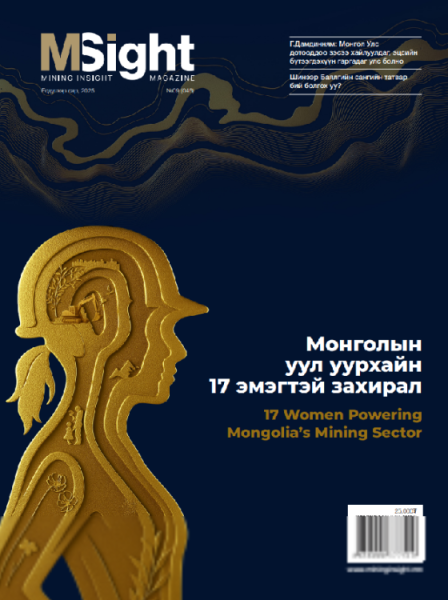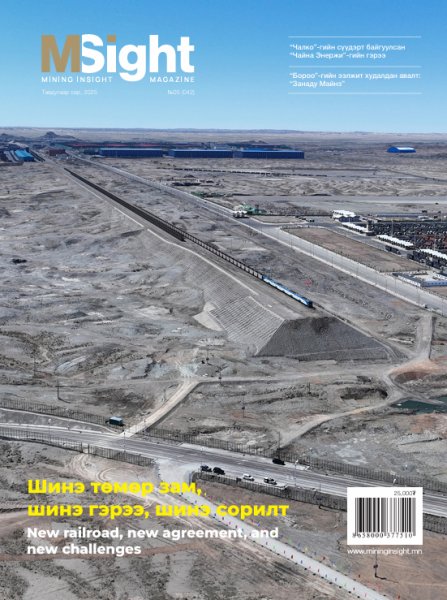
In 2023, Mongolia set its sights on achieving USD 10 billion in exports, with such projections hinging significantly on the outcomes of the port recovery efforts. Remarkably, this target was not only met but exceeded, as exports soared to a historic high of USD 15.2 billion, marking a significant milestone for our nation. This surge in exports catalyzed a 7 percent expansion in the economy, stabilizing key indicators while propelling Mongolia's foreign exchange reserves to an unprecedented USD 5 billion, and strengthening Tugriks rate by approximately MNT 200 compared to mid-2022. The remarkable success of coal exports played a pivotal role in this achievement. In 2023, coal exports witnessed a sharp increase, reaching the highest-ever volume of coal exported in Mongolia's history, totaling 69.6 million tonnes. This significant achievement also translated into record-breaking export earnings, totaling USD 8.9 billions. Despite the lifting of China's unofficial ban on Australian coal, Mongolia's exports to China did not surge due to supply instability, highlighting the crucial role played by port policy in seizing market opportunities. The ability to capitalize on these market dynamics is undoubtedly a testament to the port policy implemented.
Mongolia's coal exporters have weathered rapid market shifts, often struggling to fully exploit opportunities due to port limitations. However, the post-pandemic era saw a paradigm shift in port management, with the state revitalizing its ports, enacting development policies, and appointing dedicated custodians to oversee their progress. These strategic initiatives, coupled with the establishment of the National Port Recovery Committee, have led to a remarkable tripling of port capacity over the past two years. This progress signifies a departure from the erstwhile ad-hoc approach to port management, with a newfound focus on addressing the underlying constraints that have historically impeded economic development and expansion. While reflecting on these achievements is important, Mining Insight shifts its focus to future tasks and solutions for port development in its latest issue, emphasizing the imperative of ongoing efforts to propel Mongolia's ports toward sustained growth and prosperity. The National Port Committee is implementing its strategic goal of efficiently managing the strategic role of ports.
This strategy, aimed at shaping ports into engines of national development, is outlined in the "5E" framework. Specifically, it involves clarifying the legal framework, prioritizing port activities and regional integration, establishing accountability for events occurring at ports, resolving issues related to land use, and ensuring that port operations contribute to sustainable economic development. As a result, ports are envisioned to become key drivers of economic growth rather than mere nodes in the national economy. To this end, efforts have been made to update the legal framework governing ports. Discussions are underway to refine the draft Law on Border Ports and establish common regulations in collaboration with relevant stakeholders. As per the proposed revisions, ports will be recognized as active economic entities with defined land, regulations, and objectives. They will be managed by legal entities geared towards generating business profits, positioning themselves competitively in international trade vis-àvis ports of other nations. Three key points underscore the innovative approach to viewing the port as a business. Firstly, the Border Port Authority will assume ownership of land in the border and port areas, leasing it out for business activities exclusively.
This initiative aims to maximize business opportunities for national enterprises and citizens. Secondly, addressing the port's lack of revenue, a legal framework will be established to govern the setting and utilization of fees for port services, with income derived from goods transiting through the port, transportation fees, and land rentals supplementing the state budget. Thirdly, port management will be entrusted to specialized entities such as a Port Development Corporation (PDC) or dedicated companies at each port, facilitating swift trade for enterprises utilizing the port and improving the working and living conditions of overseeing state institutions. Ownership structures may vary, including public, private, or joint ownership, with revenue generated through port services, competition in service provision, and the promotion of niche goods. The aim is to pilot this principle through government-private partnerships in select ports. In essence, the port, serving as a pivotal source of export income and a linchpin for economic expansion, adopts a policy of equitable development and collaboration with neighboring entities. Explore more in this special edition April issue dedicated to the recovery of the Port.



























